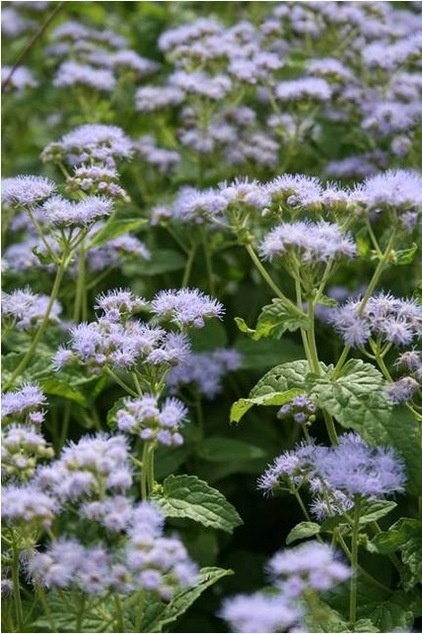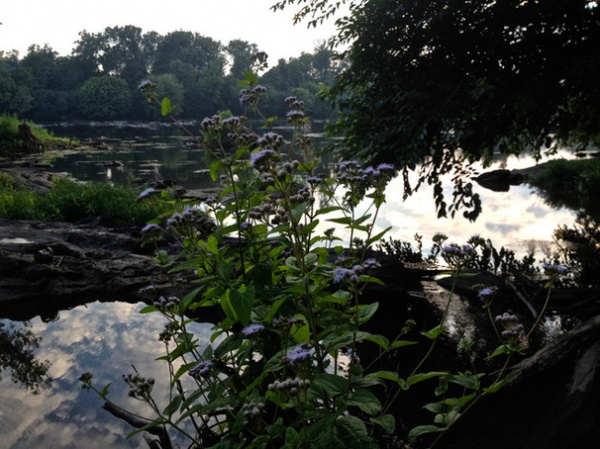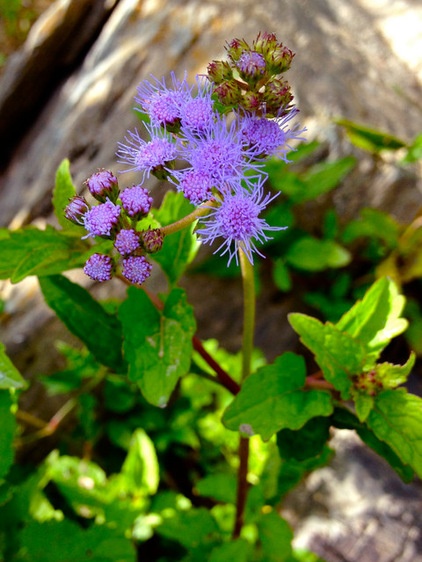Great Design Plant: Conoclinium Coelestinum
http://www.decor-ideas.org 09/04/2015 00:14 Decor Ideas
About half of my Nebraska garden blooms from mid-August through October, and blue mistflower (Conoclinium coelestinum) is a key plant during that time. It’s short and unassuming for months, but late-summer blooms provide pollinators with many weeks of food when there’s little else to eat. If you have moist to medium soil and are looking for a plant to form itself into drifts and moderately sized clumps, read on.

Botanical name: Conoclinium coelestinum, formerly Eupatorium coelestinum
Common names: Blue mistflower, blue boneset, mistflower, wild ageratum
Origin: Native from Texas through Oklahoma and southeast Kansas up to Illinois, east into New Jersey and New York, and south through Florida and the Gulf states
Where it will grow: Hardy to minus 20 degrees Fahrenheit, or minus 29 degrees Celsius (USDA zones 5 to 10; find your zone)
Water requirement: Medium to moist soil
Light requirement: Full sun to some shade
Mature size: 2 feet tall and wide
Benefits and tolerances: Can be used as a rain garden plant, on stream edges or in other low areas and depressions
Seasonal interest: Blooms in late summer through fall, with good yellow leaf color in northern zones in autumn
When to plant: Plant potted or bare-root plants in late spring to late fall; sow seeds in late fall through winter
Distinguishing traits. Most of the year, blue mistflower is an unassuming ground cover or short perennial — just a lot of green leaves. Come fall, you’ll have a month or more of purple blooms that insects adore, from moths to butterflies to bees. The fall seed heads are briefly ornamental until the wind carries them off.

Photo by Fritz Flohr Reynolds

How to use it. Drifting and massing would be an ideal scenario, and would look especially striking from a distance, but using it as dotted clumps here and there would also be appealing. At around 2 feet tall (taller in wetter, sunnier spots), it is an easy plant to use among taller perennials like ironweed (Vernonia fasciculata), swamp milkweed (Asclepias incarnata) and Culver’s root (Veronicastrum virginicum).
In a rich and moist loam in full sun, mistflower can be somewhat aggressive, via runners, but I find it is fairly well behaved in clay, spreading only about a foot each year in symmetrical patterns. It will not tolerate drought or prolonged periods of little moisture (say one to two weeks — less in mid to late summer in full sun when the heat is on).
Planting notes. Blue mistflower is most often seen growing in the wild in moist, open woods, along streams or other edges of water, in depressions in meadows and prairies, in ditches and at the base of slopes and bluffs. These conditions signal that the plant is an ideal addition to a rain garden or another area where water gathers and then drains away. A half-shade-and-sun location could work, too, but it will produce fewer blooms. Potted plants can go in during any time of the year; seeding is best done in bare soil after a few hard freezes, into midwinter.
Photo by Fritz Flohr Reynolds
More
Browse plants native to other regions of the U.S.
See more ways to garden for beneficial insects
Related Articles Recommended












